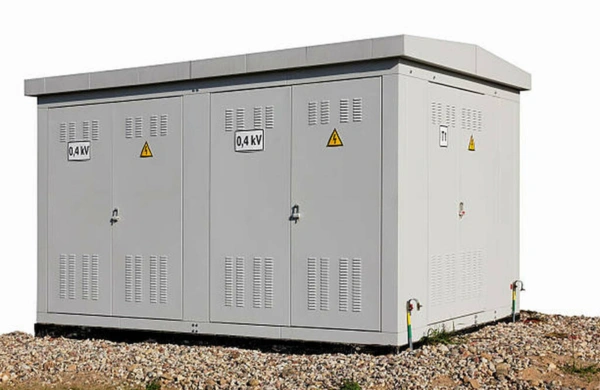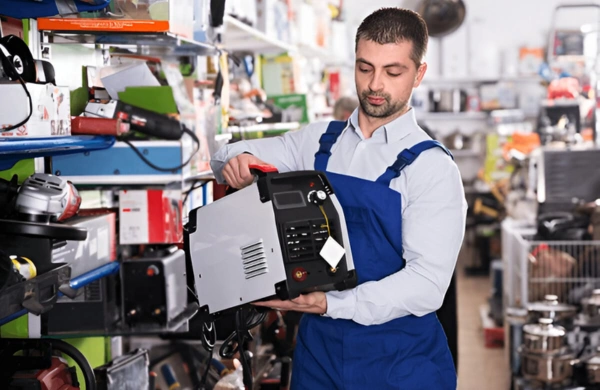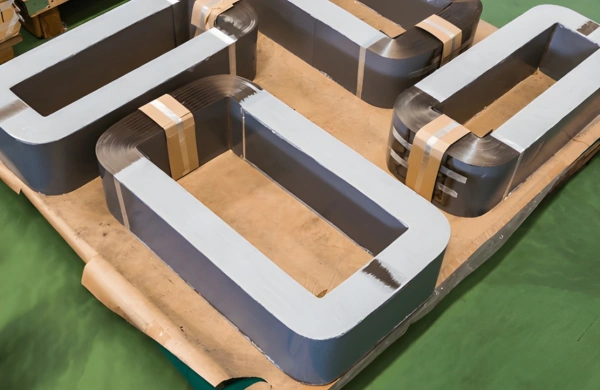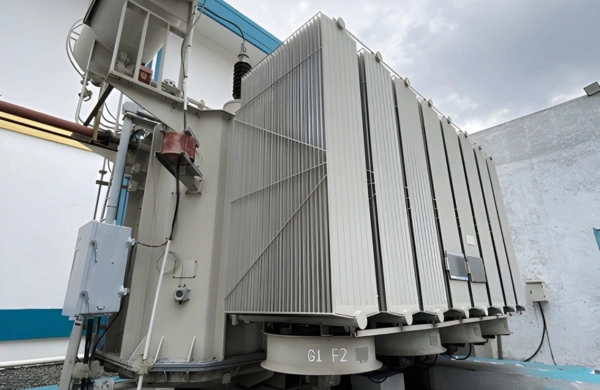As global demand for reliable power continues to rise, utilities and industries increasingly rely on container-type transformer substations to accelerate grid deployment. Designed as pre-fabricated, plug-and-play systems, these substations integrate transformers, switchgear, and control equipment within standard ISO containers. The result is a rapidly deployable and transportable power unit capable of energizing projects in days instead of months.
For North American infrastructure developers — from renewable energy parks to remote industrial installations — containerized substations are becoming a preferred choice due to their ease of logistics, modular design, and tested reliability. Leading manufacturers like Zetwerk combine advanced fabrication, electrical integration, and rigorous type testing to deliver turnkey container substations that meet international performance standards.
Know About Container Type Transformer Substations for Rapid Power Setup
1. The Concept and Importance of Containerized Transformer Substations
A container-type transformer substation, often called a portable or prefabricated substation, is a fully enclosed electrical system engineered for mobility and quick installation. Each unit typically includes:
- Power or distribution transformer (oil-immersed or dry-type)
- High-voltage and low-voltage switchgear
- Protection relays and metering systems
- Control, communication, and SCADA interfaces
- Cooling and ventilation systems
- Pre-wired internal bus connections and safety interlocks
These substations are designed to meet the growing need for temporary or fast-track power infrastructure, supporting:
- Construction and mining sites
- Renewable energy farms
- Remote or emergency power restoration zones
- Industrial expansion projects
- Defense and mobile operations
By combining mechanical portability with electrical reliability, container-type substations ensure uninterrupted energy supply under diverse field conditions.
2. Engineering Design and Construction Features
Containerized substations are designed with a strong focus on durability, compactness, and environmental resilience. Their modular structure allows easy transportation and on-site connection with minimal civil work.
Key engineering features include:
- Standard Container Dimensions: Typically 20 ft or 40 ft ISO container shells reinforced with structural steel.
- Thermal Management: Built-in ventilation louvers, forced-air cooling, or HVAC systems for temperature control.
- Vibration and Shock Resistance: Base frames and mounts designed to absorb transport-induced mechanical stress.
- Cable Entry Systems: Gland plates and removable panels for flexible cabling from underground or overhead feeders.
- Weatherproofing: IP55 or higher protection level with powder-coated exteriors, anti-condensation heaters, and dust filters.
- Fire and Arc Protection: Use of flame-retardant insulation, arc suppression devices, and segregated compartments for safety.
Each unit is designed for plug-and-play connection to the grid — requiring only incoming and outgoing cable terminations.
3. Electrical Configuration and Performance
Container-type substations can be configured for both medium-voltage (up to 36 kV) and low-voltage (below 1 kV) applications.
Common configurations include:
- Step-down units: 33 kV / 11 kV / 0.415 kV
- Step-up units: for renewable generation, e.g., 0.415 kV to 11 kV or 33 kV
- Dual-transformer systems: offering redundancy and load sharing
Performance parameters typically achieved:
- Efficiency: >99% (with low-loss CRGO cores and copper windings)
- Noise level: ≤ 60 dB for urban installations
- Temperature rise: Within IEC 60076 limits
- Overload capacity: Short-term 120% rated load capability
The design also accommodates dry-type transformers for indoor or fire-sensitive areas and oil-immersed transformers for outdoor or high-capacity requirements.
Zetwerk’s container substations are engineered for maximum efficiency and low total cost of ownership, balancing compact design with robust performance under diverse climatic and load conditions.
4. Manufacturing Excellence and Quality Control
Every stage of containerized substation manufacturing requires precision — from structural fabrication to electrical integration. Zetwerk’s vertically integrated facilities manage both mechanical and electrical production, ensuring consistent quality and shorter lead times.
Key manufacturing processes include:
- CNC laser cutting and welding for container modification and frame fabrication.
- Automated transformer coil winding and core assembly for consistent performance.
- Vacuum Pressure Impregnation (VPI) for insulation of dry-type transformers.
- High-voltage testing bays for dielectric, temperature rise, and impulse tests.
- Pre-assembly wiring and FAT (Factory Acceptance Test) before shipment.
All systems are tested as complete assemblies under simulated load conditions. This ensures field reliability, reducing the need for additional on-site testing and commissioning.
Zetwerk adheres to IEC 62271, IEC 60076, IS 1180, and ANSI/IEEE C57 standards, with each container substation supplied with complete type-test certificates, QA reports, and material traceability documents.
5. Application Scenarios and Use Cases
Containerized transformer substations have become a cornerstone for rapid power setup in diverse environments. Typical use cases include:
- Renewable Energy Projects: Integration of solar or wind generation to grid points in remote areas.
- Temporary Power Supply: For construction, mining, or large-scale industrial expansions.
- Emergency Response: Rapid restoration of power after grid failures or natural disasters.
- Defense and Mobile Units: Portable power for bases, radar systems, or field hospitals.
- Data Centers and EV Charging Infrastructure: Quick-deploy substations to meet immediate power demand surges.
Because these substations are prefabricated, utilities can standardize designs across multiple locations, simplifying maintenance and spares management.
6. Testing, Certification, and Reliability Standards
Testing and certification play a pivotal role in ensuring safety and performance. Containerized substations must meet:
- IEC 62271-202: Prefabricated substation standards
- IEC 60076: Power and distribution transformer standards
- IEEE C37 / C57: For switchgear and transformer testing in North America
- ISO 9001, 14001, 45001: For quality, environmental, and safety compliance
Zetwerk’s transformers testing protocols include:
- Dielectric and induced overvoltage tests
- Short-circuit withstand capability verification
- Partial discharge measurement
- Functional testing for control and interlock circuits
- IP and temperature rise testing under full load conditions
By completing full FAT in-house, Zetwerk ensures that every substation is delivered ready for energization — reducing commissioning time from months to weeks.
7. Benefits of Containerized Substations for Modern Utilities
Container-type transformer substations deliver several operational and financial advantages:
- Rapid Deployment: Completely pre-assembled and tested before dispatch.
- Minimal Civil Work: Requires only a concrete pad or steel foundation.
- High Mobility: Easily transportable via road, rail, or sea.
- Scalability: Multiple units can be paralleled to meet growing load demand.
- Enhanced Safety: Fully enclosed systems reduce live part exposure.
- Reduced Downtime: Quick installation and plug-and-play commissioning.
- Cost Efficiency: Lower installation and lifecycle costs compared to traditional substations.
For utilities managing expanding grids or industries operating across dispersed sites, containerized substations provide unmatched agility and long-term reliability.
8. Why Choose Zetwerk as a Container Substation Partner
Zetwerk brings together design, manufacturing, and supply chain integration under one unified platform. This ensures project-specific customization, shorter production cycles, and global export reliability.
Zetwerk’s advantages include:
- ISO-certified, state-of-the-art transformer and substation manufacturing facilities
- Full compliance with IEC, ANSI, and BIS standards
- Modular design capabilities for single or dual-transformer configurations
- In-house fabrication, electrical assembly, and type testing
- Proven export experience supporting utilities and EPCs across North America
Through rigorous engineering and end-to-end control, Zetwerk ensures consistent performance, quality traceability, and faster deployment for every containerized substation project.
Conclusion
Container-type transformer substations are redefining how utilities and industries approach power infrastructure — making it possible to deliver stable, high-capacity power in record time. Their modular, factory-tested design eliminates the complexities of on-site assembly while ensuring compliance with stringent performance standards.
As North American industries move toward distributed generation and rapid infrastructure expansion, Zetwerk’s engineered container substations offer a future-ready solution — combining reliability, safety, and efficiency in a transportable package.




Zetwerk’s integrated manufacturing and engineering capabilities help utilities and developers deploy substations faster, scale smarter, and ensure long-term power continuity across challenging environments.
FAQs
A. It’s a prefabricated, enclosed electrical system integrating transformers, switchgear, and control gear inside an ISO container for rapid installation and mobility.
A. Typically up to 36 kV for medium-voltage distribution, with options for lower or higher voltages depending on design.
A. Since they’re factory-assembled and tested, on-site setup can be completed within days to a few weeks.
A. Yes. They are IP55-rated, corrosion-resistant, and engineered for temperature, dust, and humidity resilience.
A. Zetwerk offers end-to-end manufacturing, full testing, and North America–ready compliance — ensuring rapid power delivery and long-term reliability.







